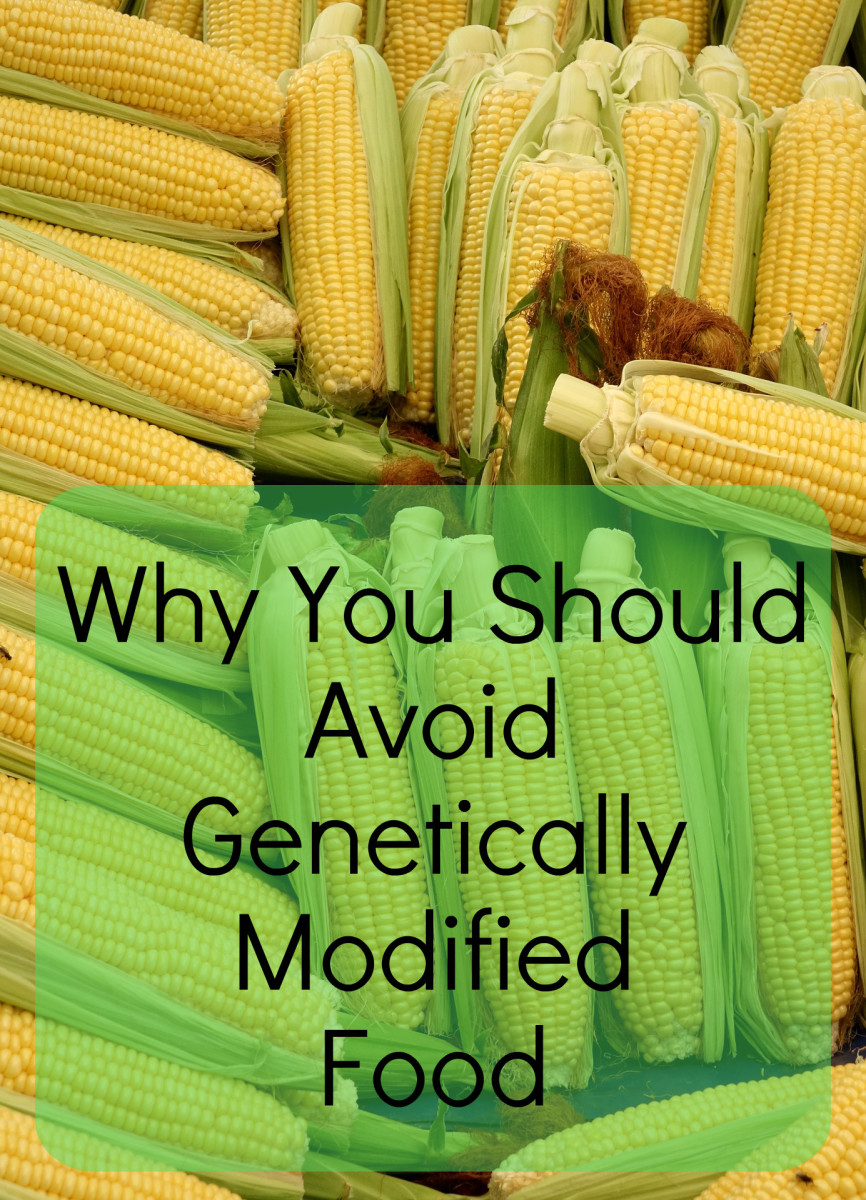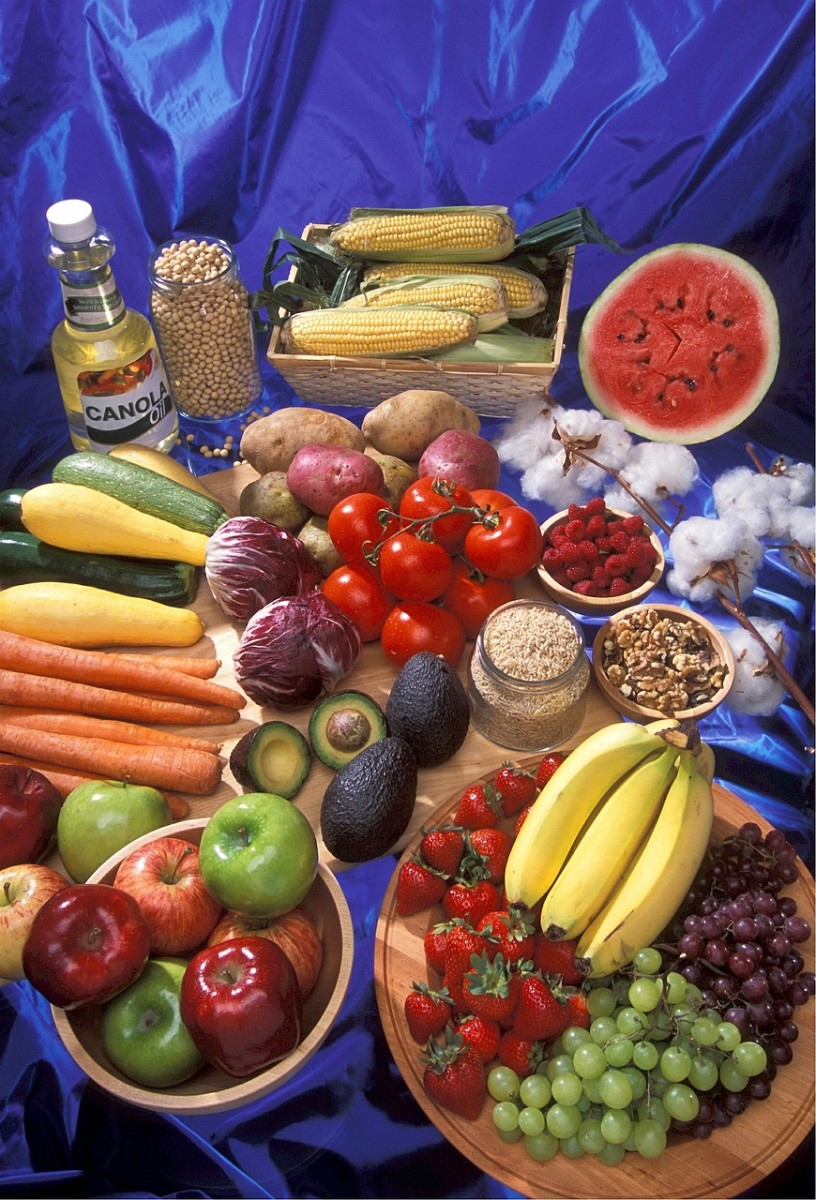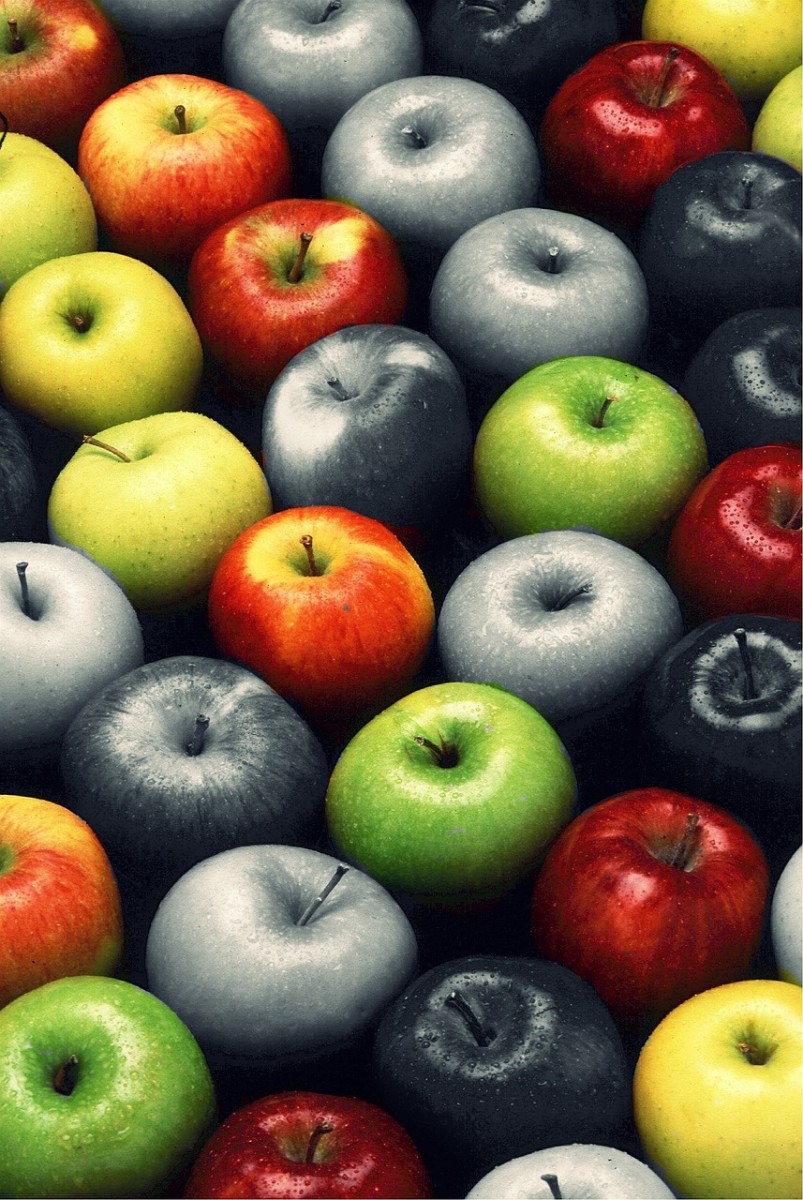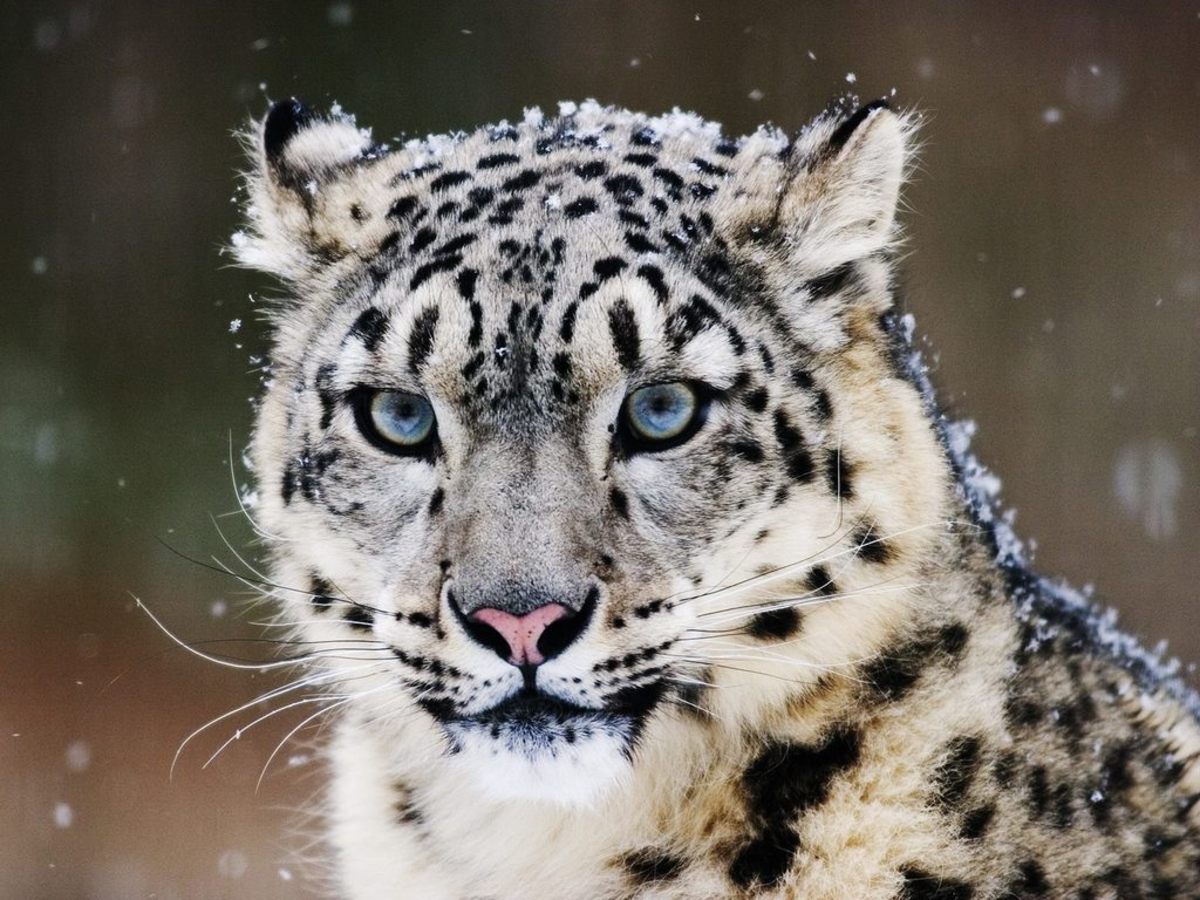What Are GMOs and Are They Safe?
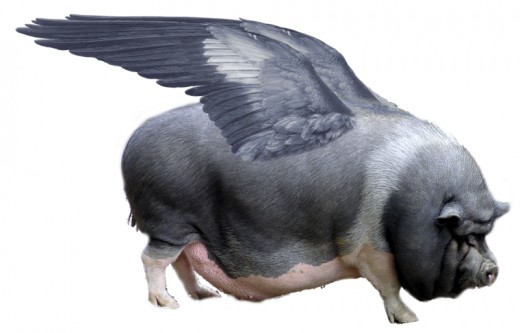
Anyone who has ever played World of Warcraft, or any other MMO for that matter, would know the joys of creating your very own custom made characters. Want spiked, flaming red hair or perhaps long blonde hair? You got it. Want pointy elvish ears? You can have that too. You can even control the tone of your skin and the proportions of your body parts. Wouldn’t it be great to have such fine-tuned control over your own physical attributes? Genetic engineering might be the closest we get to such a desired outcome.
The technique involves taking a gene from one species and inserting it into another, and thus GMOs are born. Imagine being able to glow in the dark like a jellyfish or sticking to the wall like a spider. Sounds fun, right? I bet it does but that sort of thing isn't really feasible right now. Besides the questions of ethics that comes into play when just discussing the possibility of human genetic engineering, there is the fact that our complex genome (which we have yet to fully understand) doesn't really lend itself to having genes randomly inserted into it. But perhaps it might be possible in the future, for now, we will have to settle for those genetically modified flying pigs. Just kidding there is no such thing, but we do have an assortment of genetically modified plants and animals.
What Is a Gene?
Perhaps I should rewind a bit and start off by telling you what a gene is. A gene is this neat little code (sequence of nucleotides) within our DNA, inherited from our parents, that determines our physical characteristics. That blonde hair you inherited from your mother, there’s a gene for that. Those icy blues eyes, also coded for by a gene. Every physical characteristic you possess from your height, eye color, skin color, to the texture of your hair is determined by a gene.
What Is Genetic Engineering?
Normally in nature, we could only inherit our genes from our parents, and the members of a species could only possess traits that are coded for by genes that arose within that species. So pigs don’t fly and dolphins don’t have six legs. But scientists have found a way to take the genes from one species and insert it into another. Bacteria, viruses, insects, animals, and humans are all fair game when it comes to sourcing genetic material for this nifty technique. Genes are inserted into the target organism by various means. Some such methods of gene transfer include:
- Using a DNA gun to fire gold pellets or tungsten coated with DNA into cells.
- Exposing the cell to high voltage electrical pulses to create holes in the membrane so that DNA can translocate across it.
- Using viruses or bacteria to introduce foreign DNA into cells.
- Injecting the DNA into a fertilized egg using a fine needle.
Organisms that are modified in this way are called genetically modified organisms or GMOs for short.
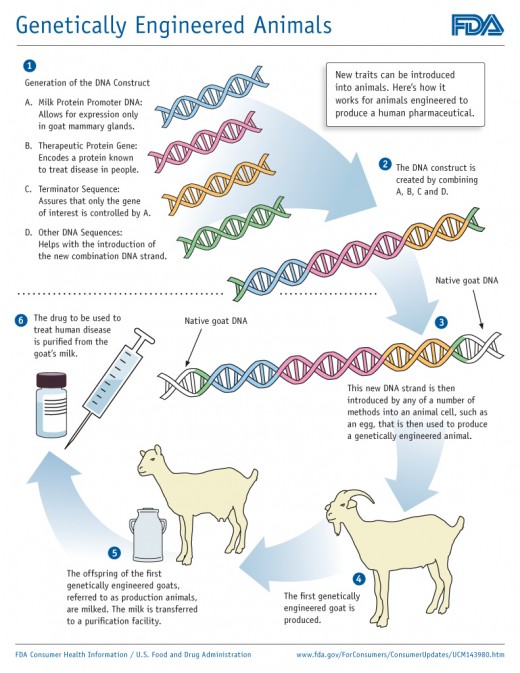
Examples of GMOs
Humans have been playing around with the genomes of plants and animals for ages. One farmer or breeder would see a plant or animal with a trait that he found desirable. Perhaps he chanced upon a dog with pointy ears or a pink flower that would normally be colored red. He would then selectively cross that plant or animal and all its progeny until that trait became fixed. And thus a new variety of plant or animal was born; this is how for centuries we have been able to create so many new different varieties of plants and animals.
We can see this in the roses we buy and the pets we own. So many different colors, patterns, and shapes give us a plethora of choices to choose from. But conventional breeding techniques always relied on the variation that was present in the species. This placed limits on the traits that could be bred into plants and animals. This all changed in 1986 when scientists succeeded in inserting the gene for a human growth hormone into a tobacco plant, which then successfully produced the hormone. Three years later they would add to that accomplishment by creating transgenic tobacco plants that could produce human antibodies.
Eventually, in the 1990s GMOs were introduced into our food supplies. Since then there has been a wide range of plants and animals that have been genetically altered. Glow in the dark pigs (their noses in this instance) have been created by inserting into their genome the gene that’s responsible for bioluminescence in jellyfish. Tomatoes have been modified to resist freezing temperatures by adding the anti-freeze genes of the winter flounder fish to their genome. But these aren’t the only examples of scientists tinkering with the genomes of plants and animals. Here are a few more:
- Goats that produce spider web proteins in their milk.
- Pigs with cowhide skin.
- Roses modified with the pansy gene have a blue color a feat that was previously impossible with conventional breeding techniques.
- Potatoes that don’t bruise and apples that don’t brown.
- Tomatoes that don’t soften when ripening.
Scientists are currently in the process of developing edible vaccines by inserting the genes of benign E. coli into the DNA of banana. Once inserted into the DNA of banana, the genes cause the plants to produce E. coli proteins. When ingested these proteins would cause an immune response much like that normally caused by an E. coli infection. The result: immunity is built up against the E. coli bacterium and subsequent infections will no longer cause illness in that individual. If successful, it’s hoped that the use of edible vaccines will make the vaccine more readily available for those who currently don’t have access to it.
Why Introduce GMOs Into Our Food Supply?
With the current world population set at 7.4 billion people and expected to grow to 10 billion people by 2056, demand for food will undoubtedly increase in the coming decades. Farmers will have to produce 60 percent more food on the same amount of agricultural land. So how do you go about producing more food on the same amount of land? You increase your yields, and GMOs may provide a way of doing just that. GMOs can produce the same amount of food on less water, less fertilizer, fewer herbicides, and fewer insecticides than unmodified plants and animals.
Currently, there is a variety of cotton called Bt cotton that produces a pesticide inside its body. The pesticide protects the plants from being eaten by insects and reduces the quantity of pesticides the farmer has to spray. Salmon have also been modified to mature much faster and cows to resist mad cow disease.
The addition of a gene to the genome of soybean, which when expressed, gives the bearer resistance to the glyphosate herbicide allows farmers to spray their crops without damaging or killing them. Geneticists can even modify plants to tolerate environmental stressors and live in environments they would otherwise have not been able to.

Issues Surrounding GMOs
The genomes of plants and animals are incredibly complex. Take for instance the human genome, which consists of approximately 20,000-25,000 protein-coding genes. Each gene contains the genetic code to synthesize a specific protein that performs a specific function in the body, and these genes are controlled by regulators that switch the gene on or off when the need arises. Just for the sake of comparison, imagine a library with thousands of books with each book storing information on a specific topic and each having a precise location it must be placed in to maintain the functionality of that library. Now imagine removing one book and replacing it with an entirely unrelated book. You can probably imagine the complications that would arise when trying to retrieve the book that was removed.
Similar complications arise when performing genetic engineering, which is by the no means a precise technique. The new genes that are placed within the cell using genetic engineering techniques insert themselves randomly at any point in the cell’s DNA. If, by chance, genes happen to insert themselves within an existing coding gene or their regulators it can essentially switch that gene off or disrupt the expression of that gene.
If the gene that is disrupted performs an essential function in the organism, then its disruption can potentially cause the death of that organism. At this point, you’re probably wondering, what does all this have to do with me? Well, as a consumer it does concern you since a vast number of our food products do contain GMOs. Manufacturers aren’t even required to make known, through their labeling, the presence of GMOs in their products. There have been stories circulating about the hazards that GMO’s pose, from rats exhibiting tumorous growth after being fed GM potatoes to sheep dying after feeding on Bt cotton. But the question still remains, are GM foods safe for human consumption? GM feed accounts for 70-90 percent of the feed eaten by livestock.
If GM feed is indeed unsafe, farms would be littered with sick and dead animals, an occurrence that would be sure to garner media attention, but that is not the case. To evaluate the effect of GM feed on the health of livestock geneticist Alison Van Frenennaam and her assistant Amy E. Young assessed 29 years of livestock productivity and health data from before and after genetically modified ingredients were introduced into animal feed. Their analysis of the data found that since the introduction of GM material into animal feed in 1996 there have been no unusual changes in the health and productivity of livestock. On the other hand, the transfer of genes between GMOs and their wild relatives is a legitimate concern, which could threaten the existence of both. To address this concern, any genetically modified crop that is developed is assessed to determine the possibility of gene transfer to wild relatives. The proteins produced by genes that are introduced into crops and livestock could be toxic to humans or illicit an allergic reaction.
These proteins are assessed prior to being introduced into food or animal feed. For example, if the genes from peanut were transferred into another food crop the protein produced could cause allergic reactions in people who are allergic to nuts. The possible transfer of antibiotic resistance genes, which are used as markers when creating GMOs, to gut flora is also a concern. So you see any GMO that enters into our food supply goes through rigorous testing and is strictly regulated by the FDA. Any potential risk to human health is minimized, so until legitimate experiments show otherwise GMOs are here to stay

